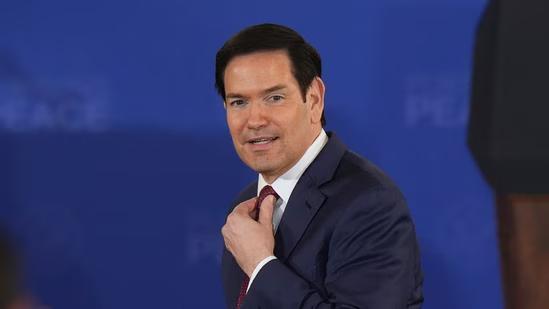
We Keep an Eye on India & Pak Situation Every Single Day: US
The simmering tensions between India and Pakistan have been a major concern for the international community, and the latest statement by US Secretary of State Marco Rubio has sent ripples across the globe. In a recent interview, Rubio claimed that the US “keeps an eye” on the situation between India and Pakistan “every single day”. This statement has sparked a flurry of reactions, with many wondering what this means for the future of the region.
Rubio’s comments came in the context of the ongoing conflict between Russia and Ukraine. When asked about the prospects of a ceasefire between the two warring nations, Rubio said, “What we’re aiming for is not some permanent ceasefire. What we’re aiming for here is a peace deal.” This statement has been interpreted by many as a hint that the US is also seeking a long-term solution to the India-Pakistan conflict, rather than just a temporary ceasefire.
But what does this mean for the people of India and Pakistan? The tensions between the two countries have been ongoing for decades, with frequent outbreaks of violence and clashes along the Line of Control (LoC). The situation has become so volatile that even a small miscalculation can lead to a full-blown war.
Rubio’s statement is significant because it highlights the US’s commitment to monitoring the situation between India and Pakistan. The US has long been a major player in the region, and its influence is felt across the globe. By keeping an eye on the situation, the US is sending a clear message that it is not going to ignore the tensions between the two countries.
But what does this mean for the future of the region? The US has a history of intervening in conflicts around the world, and its involvement in the India-Pakistan situation could have far-reaching consequences. Some have argued that the US’s involvement could lead to a more peaceful resolution, while others have warned that it could exacerbate the situation.
One thing is clear, however: the situation between India and Pakistan is complex and sensitive. The two countries have a long history of conflict, and the tensions between them are deeply rooted in their respective national identities and interests. Any solution to the conflict will require a deep understanding of these complexities and a willingness to engage in dialogue and diplomacy.
Rubio’s statement has also raised questions about the role of diplomacy in resolving the conflict. The US has long been a proponent of diplomacy as a means of resolving conflicts, and its involvement in the India-Pakistan situation could be seen as a way of promoting dialogue and negotiation between the two countries.
But diplomacy is not always easy, and the India-Pakistan conflict is no exception. The two countries have a long history of mistrust and hostility, and it is unclear whether they are willing to engage in meaningful dialogue. The US’s involvement could be seen as a way of pushing the two countries to talk, but it is unclear whether this would be effective.
Another challenge is the role of third-party mediation. The US has a history of mediating conflicts around the world, and its involvement in the India-Pakistan situation could be seen as a way of helping the two countries to negotiate a peace deal. But third-party mediation is not always effective, and it is unclear whether the US would be able to bring the two countries together.
In conclusion, Rubio’s statement has sparked a flurry of reactions, and the future of the region is uncertain. The US has a history of intervening in conflicts around the world, and its involvement in the India-Pakistan situation could have far-reaching consequences. The situation between the two countries is complex and sensitive, and any solution will require a deep understanding of these complexities and a willingness to engage in dialogue and diplomacy.
As the world watches the situation unfold, one thing is clear: the US is keeping a close eye on the situation between India and Pakistan. Whether this will lead to a peaceful resolution remains to be seen, but one thing is certain: the stakes are high, and the world is watching with bated breath.



